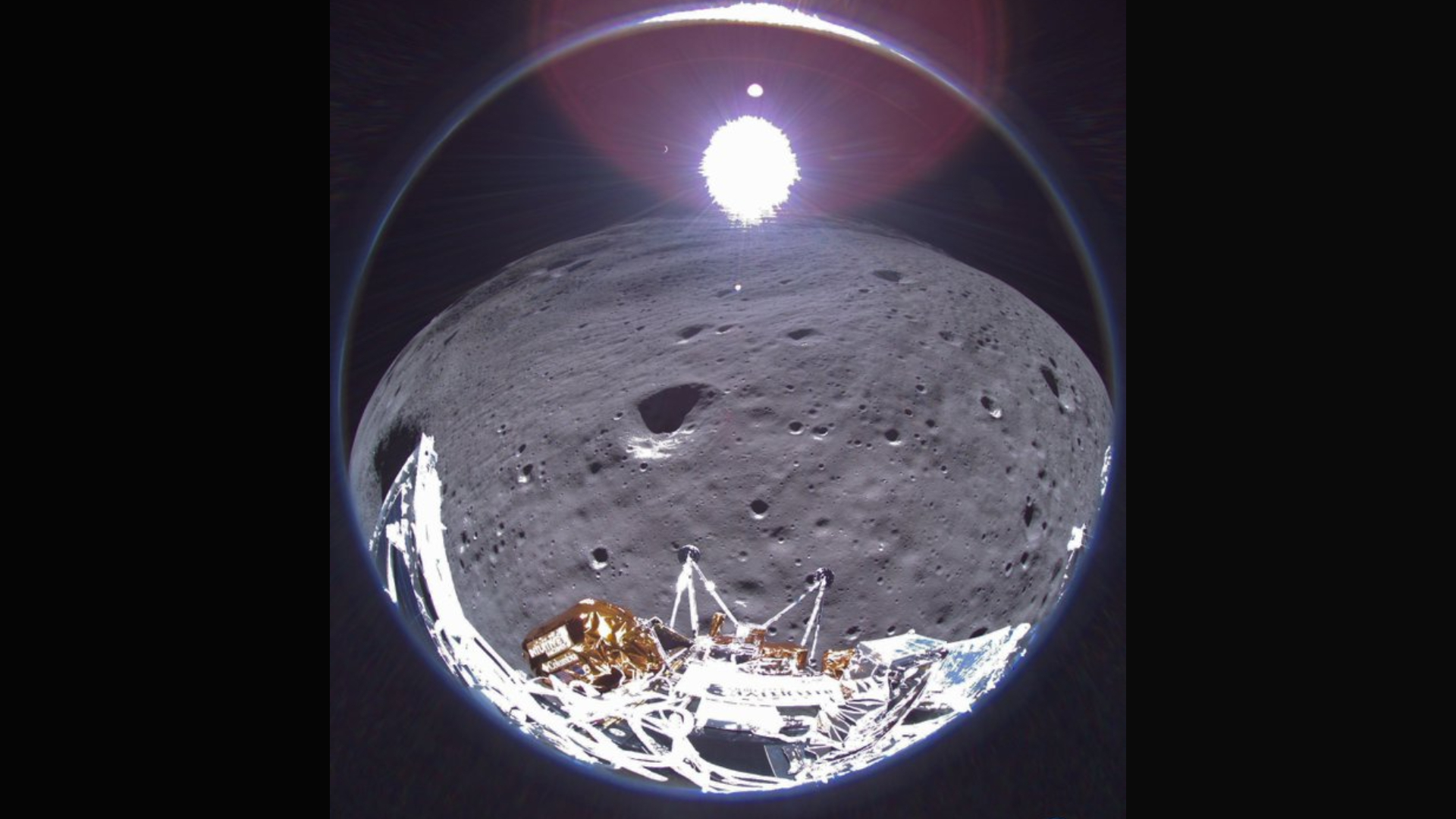Odysseus lunar lander, 1st US craft on the moon in 50 years, has died and will 'not complete another call home'
Intuitive Machines' Odysseus lander has failed to awaken following its plunge into lunar night, despite the spacecraft's solar panels now receiving enough sunlight to ostensibly power its radio.

Odysseus, the first U.S. lander to park on the moon in more than 50 years, has "permanently faded" and will not be waking up again, the company that built it announced on Saturday (March 23).
The moon lander, nicknamed Odie, touched down near the lunar south pole on Feb. 22 after a nail-biting approach and a malfunction in the spacecraft's landing guidance system. The spacecraft did so with a face plant, however, landing on its side after one of its six legs snapped. The lander's stumble only partially affected the success of its mission, which was to study the behavior of moon dust during spacecraft landings and take measurements of the conditions in the little-explored lunar region.
Odysseus, which was built by Houston-based company Intuitive Machines, powered down one week after landing as lunar night began for 14 days. Flight controllers ordered the spacecraft to snooze for three weeks, while the moon's south pole faced away from the sun, but they hoped Odie would reawaken once sunlight hit its solar panels again.
"Intuitive Machines started listening for Odie's wake-up signal on March 20, when we projected enough sunlight would potentially charge the lander's power system and turn on its radio," representatives of the company wrote on X, formerly called Twitter.
Odysseus' mission was not intended to survive the harsh temperatures and darkness of the lunar night, but "flight controllers tucked Odie into a configuration that could call home if various systems outperformed manufacturer expectations," Intuitive Machines representatives added.
On Feb. 22, the lander sent back a final farewell image before it was plunged into darkness and its systems shut down.
Sign up for the Live Science daily newsletter now
Get the world’s most fascinating discoveries delivered straight to your inbox.
Odie has not phoned home since March 20, despite its solar panels now receiving enough light to ostensibly power the spacecraft's radio. On Saturday, flight controllers concluded that "Odie's power system would not complete another call home," Intuitive Machines representatives wrote on X.
"This confirms that Odie has permanently faded after cementing its legacy into history as the first commercial lunar lander to land on the moon," they added.
Odysseus launched atop a SpaceX Falcon 9 rocket from NASA's Kennedy Space Center in Cape Canaveral, Florida, on Feb. 15. The lander entered the moon's orbit on Feb. 21 and completed a single tight loop above the lunar surface before slowing for landing.
The mission is the second to touch down on the moon's south pole, following the successful landing of India's Chandrayaan-3 in August 2023. (Chandrayaan-3 also died shortly after its arrival.) The region has long intrigued scientists, because it contains water ice, which could one day be broken down into hydrogen and oxygen to make rocket fuel.

Sascha is a U.K.-based staff writer at Live Science. She holds a bachelor’s degree in biology from the University of Southampton in England and a master’s degree in science communication from Imperial College London. Her work has appeared in The Guardian and the health website Zoe. Besides writing, she enjoys playing tennis, bread-making and browsing second-hand shops for hidden gems.









